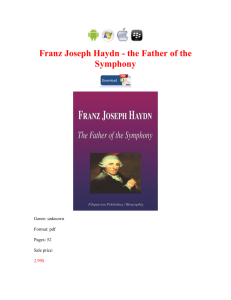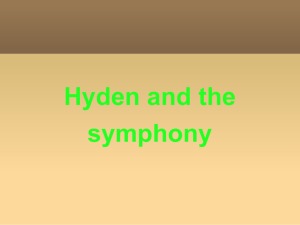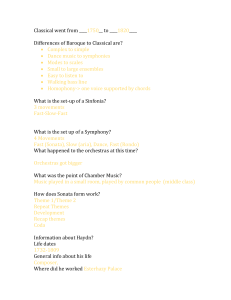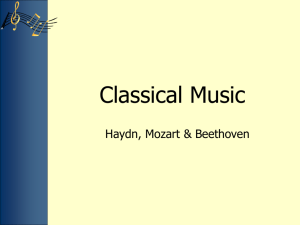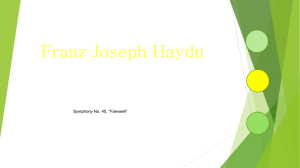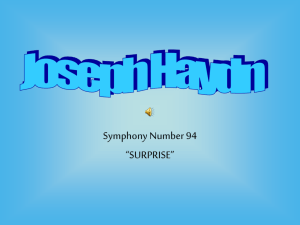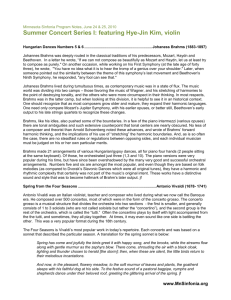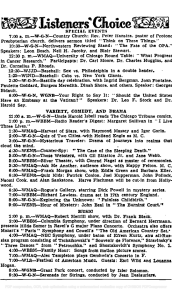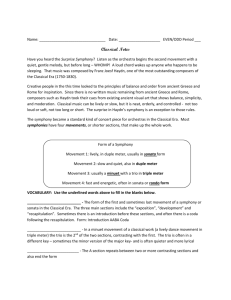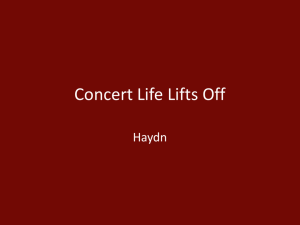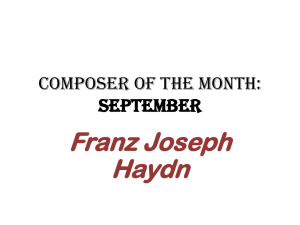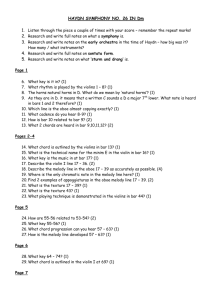J. Haydn, Symphony No. 26 (Lamentatione)
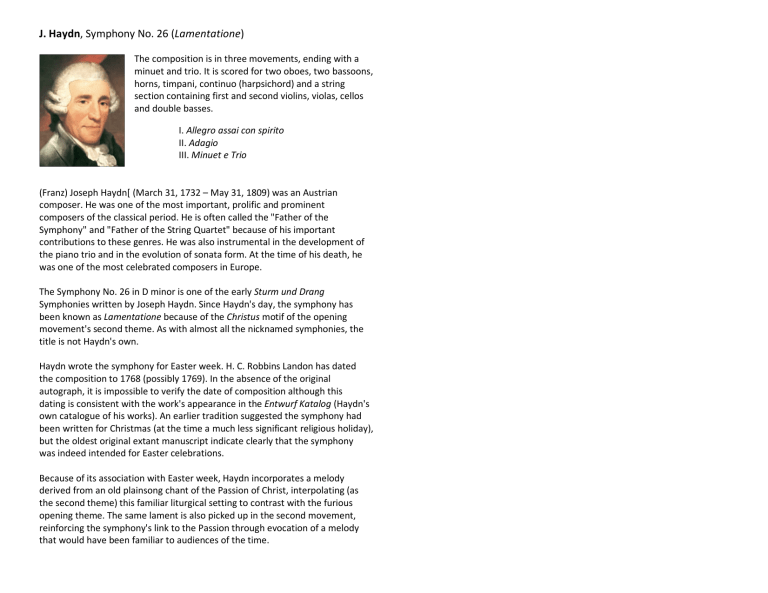
J. Haydn
, Symphony No. 26 (
Lamentatione
)
The composition is in three movements, ending with a minuet and trio. It is scored for two oboes, two bassoons, horns, timpani, continuo (harpsichord) and a string section containing first and second violins, violas, cellos and double basses.
I. Allegro assai con spirito
II. Adagio
III. Minuet e Trio
(Franz) Joseph Haydn[ (March 31, 1732 – May 31, 1809) was an Austrian composer. He was one of the most important, prolific and prominent composers of the classical period. He is often called the "Father of the
Symphony" and "Father of the String Quartet" because of his important contributions to these genres. He was also instrumental in the development of the piano trio and in the evolution of sonata form. At the time of his death, he was one of the most celebrated composers in Europe.
The Symphony No. 26 in D minor is one of the early Sturm und Drang
Symphonies written by Joseph Haydn. Since Haydn's day, the symphony has been known as Lamentatione because of the Christus motif of the opening movement's second theme. As with almost all the nicknamed symphonies, the title is not Haydn's own.
Haydn wrote the symphony for Easter week. H. C. Robbins Landon has dated the composition to 1768 (possibly 1769). In the absence of the original autograph, it is impossible to verify the date of composition although this dating is consistent with the work's appearance in the Entwurf Katalog (Haydn's own catalogue of his works). An earlier tradition suggested the symphony had been written for Christmas (at the time a much less significant religious holiday), but the oldest original extant manuscript indicate clearly that the symphony was indeed intended for Easter celebrations.
Because of its association with Easter week, Haydn incorporates a melody derived from an old plainsong chant of the Passion of Christ, interpolating (as the second theme) this familiar liturgical setting to contrast with the furious opening theme. The same lament is also picked up in the second movement, reinforcing the symphony's link to the Passion through evocation of a melody that would have been familiar to audiences of the time.
